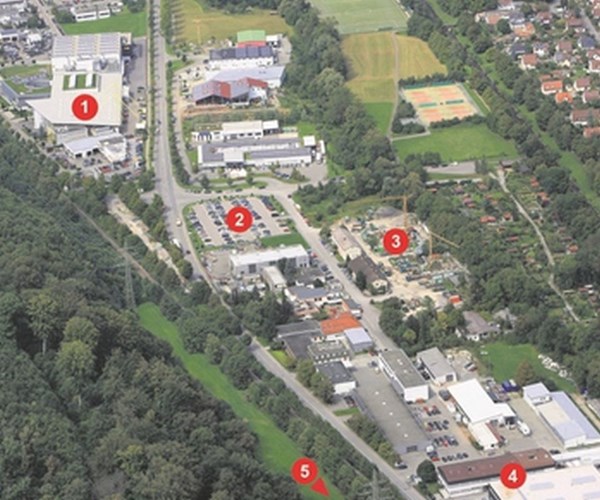6 Lessons I Learned about our Machining Business
Last month, I was privileged to attend Horn Technology Days. Here are the lessons I learned.

Horn adds a new building on Dusslinger Way in Tübingen, Germany.
Last month, I was privileged to attend Horn Technology Days. Here are six lessons learned.
Lesson 1: It’s not one thing. There is no magic bullet. There is no miracle pill. Machining is a system. Understand the system, and address system weaknesses.
Stop looking for magic answers. There is seldom a single change you can make that will optimize your process. You must consider the entire system. I took in every technical session while I was there. I expected to be told that “Whatever it is I’m showing you” is the answer to your machining problems. I was not told that at all. In all the sessions, the focus was on optimizing and understanding the interactions of the system and its components, which was refreshing.
Lesson 2: In our business, success is defined by sustainability, not lowest price. By sustainability, I do not mean “greenwashing.” To be sustainable, a company must learn to solve problems. Problems unsolved have the potential to bring your company down.
How to become more sustainable:
- Solve problems first.
- Solve the problem for good.
- Understand that the lowest cost over the long term is not the lowest price over the short term.
- Spend less time on maintenance by planning it.
- Spend more time on production.
- Spend more time on innovation.
This is why we have root cause analysis. We should only have to solve a problem once. Assure organizational learning takes place. And move forward.
Lesson 3: Pay attention to energy. This one was a complete surprise. Who knew that 37 percent of machine tool energy consumption is related to coolant and lubricant? Through-tool coolant typically runs at a rate of about 1 liter per minute (about a quart here in the U.S.) Traditional flood coolant is typically 18 liters per minute. (That’s about a 5-gallon bucket.) And the through-tool coolant is applied exactly where it is needed.
I’m not quite convinced that MQL is the answer for production machining, but I saw some demonstrations that continue to make me think.
On another note, typically utilities run from 6 to 10 percent of sales dollars in our shops. We’ve seen estimates that shop lighting can run as much as 37 percent of the electrical consumption in Warehouses and light manufacturing shops. Even if you cut that in half, it is probably wise to evaluate your current shop lighting. We can talk about compressed air another time. If you hear compressed air in your shop, you are listening to dollars floating away.
Lesson 4: Conventional milling equals conventional rubbing. All of the programs on milling at Horn showed climb milling as the preferred practice. I’m not going to pretend expertise here, but what I thought I knew is no longer what I think I ought to know in regards to cutter rotation and material feed. Climb milling is the preferred way in modern shops today.
Lesson 5: Be optimistic. Horn is expanding again. Another new building was being built down the road. Why be optimistic? How can you be optimistic? It is easy to be optimistic if you are a private company. If you believe in continuous improvement, then you want tomorrow to be better than today. Today is today, but our way is the future. Our way is going forward. Do it today, for tomorrow. Can’t argue with that. That is why Horn has a class of apprentices in development. How about you?
Bonus Lesson 6: “The Best People are the Basis of the Future.” Lothar Horn shared this thought with me in a private conversation. It really fit hand in glove with Horn’s optimistic approach to the future. By training the people and making available opportunities to learn and grow, the company is preparing its team for an anticipated, but not yet understood, future.
“There is a continuous demand to upgrade our tools. We can only meet that demand by upgrading the skills of our workforce and the technology they apply.”
When that future arrives, they know they have done their best to be prepared for that day and its challenges.
That future will arrive. It arrives every day. What have you done to prepare your shop for the future that will soon arrive?
Originally posted on PMPAspeakingofprecision.com blog.
Read Next
Do You Have Single Points of Failure?
Plans need to be in place before a catastrophic event occurs.
Read MoreA Tooling Workshop Worth a Visit
Marubeni Citizen-Cincom’s tooling and accessory workshop offers a chance to learn more about ancillary devices that can boost machining efficiency and capability.
Read More5 Aspects of PMTS I Appreciate
The three-day edition of the 2025 Precision Machining Technology Show kicks off at the start of April. I’ll be there, and here are some reasons why.
Read More











.jpg;maxWidth=300;quality=90)






